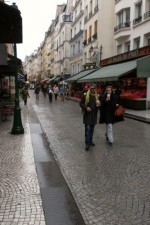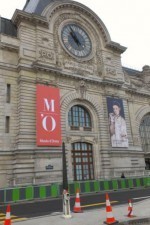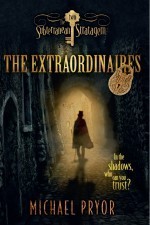Michael Pryor's Blog, page 17
April 3, 2013
Most Important Writing Tip Ever
This could be the most important writing tip you’ll ever read. I’ll settle for second best, I suppose, but I’m pretty sure it’ll be in the top five. Easily.
Computers are wonderful and they make a writer’s life easier in many ways. But computers can make a writer’s life harder, too, and this super tip addresses a subtle aspect of this.
Scenario: a writer finishes a first draft and saves it, full of satisfaction at having nailed down a vital part of the writing process, first drafts being what they are. Then, the next day or the following week, our writer opens that file and dives into reworking it, deleting, changing and polishing it until it shines, a common enough sequence of events, and conscientiously saves it at the end of her first rewriting session.
Bad. Very bad. Our author has made a common but potentially disastrous mistake.
When our author finished her reworking and saved the file, she may have consigned some of her first draft writing to electronic oblivion. If she has deleted chapters, say, from her first draft and then saved and closed this file, she cannot recover those deleted chapters, not without some super-wizard level computer geekery. You can’t undo changes once you’ve shut down the document. When you reopen it, all the changes you made, even if it was only seconds ago, have been wiped, forgotten from its undo memory.
Consigned to electronic oblivion.
This is why,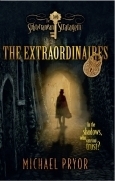 by the time I finish a novel, I end up with multiple versions each with its own separate file. The Subterranean Stratagem is my latest novel. In its folder, I have ten separate files – ‘SS1.doc’, ‘SS2.doc’ and so on to ‘SS10.doc’, the final draft. Each one represents a new draft, a new version. When I finish a draft, I take a copy and re-name it as the next in the sequence before starting work on it.
by the time I finish a novel, I end up with multiple versions each with its own separate file. The Subterranean Stratagem is my latest novel. In its folder, I have ten separate files – ‘SS1.doc’, ‘SS2.doc’ and so on to ‘SS10.doc’, the final draft. Each one represents a new draft, a new version. When I finish a draft, I take a copy and re-name it as the next in the sequence before starting work on it.
A lot of trouble, maybe? Perhaps, but the benefit of this method is that if I’m working on Draft 4 and have the suspicion that I’ve actually made things worse rather than better (it happens …) I have a pristine Draft 3 (or Draft 2 or Draft 1) to fall back on. It needn’t be a wholesale rethink, either. I could simply regret deleting a snappy dialogue exchange and then shutting down the draft I’m working on. No need for regrets. That snappy dialogue exchange is saved in one of your previous draft files.
Now, this is different from backing up, something that probably deserves its own article, because when you backup you still only have the last version you saved. Yesterday’s probably. Anything earlier has gone. If you keep good version files (and back them up) you will have access to everything you wrote, just in case. It’s a belt and braces sort of thing.
With good version control you can rewrite with confidence. You can experiment, make drastic changes, turn your story upside down perhaps leading to a brilliant new take on your initial approach. You can do all of this knowing that you can backtrack and restore any babies you’ve thrown out with the bathwater, which is inevitably a good thing.
See? That’s got to be right up there in any Top Five Writing Tips. Top Ten, at least.
March 25, 2013
My Hot Cross Bun Recipe
I’ve made this recipe for twenty years. It’s tried and true and tasty.
Ingredients

Not mine. I’ll put a photo of mine when done.
750g good bread flour. Ordinary plain flour will do at a pinch.
2 cups sultanas and currants in whatever proportions you prefer.
100g butter, softened.
1 egg yolk.
2 teaspoons ground cinnamon.
1 teaspoon ground cloves.
1 teaspoon ground nutmeg.
1 teaspoon ground allspice.
100g brown sugar.
Pinch salt.
2 sachets dried yeast.
2 cups of warm (not too warm) water.
Method
Mix together the flour, spices, salt, sugar, yeast, sultanas and currants in a big bowl.
Rub the butter through the flour/spice/yeast/fruit mixture, as if you were making scones.
Mix water and egg yolk together and gradually add to the flour while mixing.
Use elbow grease and mix everything together until it comes together. Vague, I know, but the mixture should start to come away from the sides of the bowl. You might need to add a little more flour.
Turn the mixture ball out onto a floured bench. Knead away for some time. Ten minutes? The fruit should start to pop through the dough, which will begin to be shiny, glossy and elastic.
Wash out the bowl you used. Grease it with butter. Put the dough back in and cover the bowl with plastic wrap. Leave to rise. You can put it in the oven at a very low defrost type heat (50 degrees max).
A couple of hours later, the dough should have doubled in size.
Punch the dough (whee!), turn it out and knead it a little.
Divide the dough in half. Take each half and form into twelve balls. That makes twenty-four in total. Der.
To bake the buns, I use ordinary old metal baking dishes, the sort gran used for the Sunday roast. They hold twelve dough balls beautifully – three deep and four wide.
Leave the buns for their rising. Let them double in size. About an hour.
While they’re rising, make a batter of flour and water, pop into a piping bag and paint crosses on the buns.
Cook in a 200 degree oven for 25 minutes. If you like a crunchier crust, slide the buns out of the tray and then pop them back in the oven on the rack for another ten minutes.
Serve with butter, not margarine, for best effect.
March 23, 2013
Final Paris Post
The Seine
I’m still coming to terms with the Paris trip of last November. Partly it’s because I’ve just recovered a huge stack of photos after the catastrophic computer failure I suffered in the last week of the idyll. Short version of this: I’d been carefully moving photos from phone and camera to the travel laptop for safekeeping, not trusting phone memory or camera memory card. Laptop breaks down, big time. Back in Oz, I had to try a few different places before one could retrieve anything. Yes, it was that big a meltdown. It took some time. The result is some recovered beautiful pix and some recovered corrupted pix. C’est la vie.
That incident cast a slight shadow over the Paris sojourn, but it couldn’t take away from the marvellous time we had – nearly five weeks in Paris with a few days in Hong Kong on the way over and the way back.
We planned the Paris stay to be somewhat like our London visit of 2011. We wanted to find a flat, base ourselves there, walk and Metro all around the city, and take a few day trips out a bit further. A simple plan, and it worked.
We found a flat in le Marais, right near the Pompidou Centre. Our street was a narrow mediaeval thoroughfare, Rue Quincampoix. Our flat was in a building that dated back to the sixteenth century – but with good modern renovations. It was small, but it was cosy and well appointed, and the location was perfect for us. We could easily walk to the river, the Louvre, Museé D’orsay, the Opera Garnier, the Tuileries, Notre Dame and Île de la Cité. If we were feeling lazy – or we wanted to jostle with French commuters – we took the Metro. So much of the city was in easy reach.
Early on we found the local food sellers, the fresh food markets and the marvellous boulangeries. We alternated between whipping up quick dinners (omelettes and salad with cheese to follow, accompanied by exquisite baguette) and eating out. So many excellent, affordable eateries within easy reach. I admire the way the French approach their food. They take it seriously, whether it’s
Rue Rambuteau
ingredients for their own cooking, or somewhere to eat out. They know that good food is an important part of life and they appreciate it done well.
We love a bit of history and a bit of culture, so Paris is perfect for us. Wendy speaks excellent French so she was able to negotiate any tricky purchases or bookings that came up. So we made our way around the city, soaking up experiences and generally being delighted by everything. Much of what we saw is well-known, but these sights are well-known for a reason: they’re sensational. We also enjoyed some of the lesser-known sights of Paris, each with its own specialness. The whole time there was imbued with what Denis deNuto would have called, ‘The vibe of the thing’, that wonderful Gallic style that touches all aspects of life, from the glitter to the gutters.
Must See Big Ticket Highlights
Eiffel Tower. Yes, the queues are long, but it’s hard to go to Paris and then go home and tell people you didn’t go to the Eiffel Tower. Besides, it’s a marvel in its own right, and the views are amazing.
The Louvre. So much in one place. You want your big Old Master knockouts? They’re here. Just don’t pretend you’re going to see everything.
Museé D’orsay. I liked it even more than the Louvre. It’s one hit after another, with your van Goghs,
Musee d’Orsay
your Cezannes, your Manets, your Gauguins … I could go on. Oh, and the building (a converted railway station) is extraordinary in itself.
Pompidou Centre. Okay, let’s get modern industrial funky style. Multimedia, out there installations, performances and so cool you could freeze stuff all over the place.
Notre Dame and Sainte Chapelle. Oh, may as well make it ‘Île de la Cité’ and do the whole wonderful island. Notre Dame for its rose windows and its pre-eminence. Sainte Chapelle for its gobsmacking stained glass. I mean really, really gobsmacking. Île de la Cité for its gorgeous, quaint streets and buildings and its quietness in the middle of the city.
Some Lesser Known But Still Fantastic Highlights
Museé Carnavalet. We started with this one. It’s the museum of the history of Paris and gives a superb snapshot of the city from pre-Roman days to the present. It gave us a good overview of the place we were about to spend a month in, a useful historical context.
Musée National du Moyen Age. This Left Bank museum is housed in one of the oldest remaining substantial buildings in the city, and houses some mediaeval treasures, including the majestic ‘Lady and the Unicorn’ tapestries.
Musée de l’Armée. This is probably the greatest military museum in the world. If you’re interested in weapons, uniforms and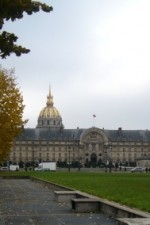 militaria in general, this is unbeatable. Sombre, at times, but breathtaking. If you’re interested, Napoleon’s Tomb is next door.
militaria in general, this is unbeatable. Sombre, at times, but breathtaking. If you’re interested, Napoleon’s Tomb is next door.
Les Puces. The flea market complex right out the end of Metro Line 4. SO MUCH STUFF. You want a seventeenth century fireplace? Not a problem. A Napoleonic cavalry sabre? You have a choice, sir. A hip 1960s lamp shade. Choose your colour! I bought a set of magnificent midnight blue tails. 1930s, maybe? Cheap.
Opera Garnier. Visit to have a look at its amazing gilt clad interior, but even better is to book one of the guided tours, as we did, where you get background, history and a peek at some parts the public doesn’t normally see.
Some Amazing Sights That Mightn’t Be for Everyone
The Sewer Tour. Under the streets of Paris you can walk through a working part of the Paris sewerage system. Fragrant, and surprisingly interesting. 
Musée Cognacq-Jay. A lovely little boutique museum specialising in seventeenth century decorative arts.
Double Fond. ‘Le café théâtre de la magie’ – a theatre restaurant/magic cabaret. Lunatic, funny, gasp-inducing stuff. Can’t speak French? Doesn’t really matter.
Musée des Arts et Métiers. Paris has three science museums, by my count. I like this one. It started out as a repository of historic instruments, devices and equipment and was housed in a twelfth century priory. Good enough to visit as it is, but it also has a replica of Lavoisier’s laboratory, a Bleriot monoplane and a working Foucault pendulum. Geek heaven.
Three Really Good Places to Eat
Le Restaurant Des Poetes. Situated in the Passage Molière, this was a busy, inexpensive, noisy French bistro where the food was excellent.
Grizzli Café. A bit more expensive, but I had a very fine cheese board here.
Le Train Bleu. For the big night out. This is part of the Gare de Lyon station and is a glorious art nouveau/belle époque dream. Good food, too.
Trips We Made Out of Paris
Chateaux of the Loire. An organised day trip where we saw the playgrounds of the French nobility. Splendid castles, beautiful grounds.
Fontainebleau
Fontainebleau. Amazing palace with so much to see. It’s been home to about a zillion kings and queens and each one has made their own special addition. Wow.
Chartres. We took the train to this town about 100 k from Paris, home to the most complete Gothic cathedral in France. The town itself has many medieval buildings and is a storybook village. The cathedral is awe-inspiring.
London. We jumped on Eurostar and whipped over to London. We spent time at the British Museum, then nipped to the Savoy Hotel for one of their perfect afternoon teas, then caught Les Miserables at the Queens Theatre. Ironic, really, leaving Paris to go to London to see a show about Paris, but there you have it. The next day we had time to visit Victoria and Albert Museum (saw a wonderful consume exhibition) and the Science Museum before we had to catch the train back home to Paris.
More thoughts
We walked around a lot and inhaled Paris.
Streetscapes. The extraordinary streetscapes. So much character.
The Metro works superbly. Miss a train? Don’t worry, there’s one coming in two minutes.
Shopping. Look around for amazing, individual designer pieces from young, upcoming makers. They’re around and cheaper and far more individual than name brand shops.
Walking Tours. We did three of the walking tours with the Paris Walks people and were impressed. Cheap, friendly and knowledgeable and with an extensive program of themed walks. We recommend them.
This is a snapshot of the wonderful time we had rather than a comprehensive rundown, but that’s for the good. A memorable time.
Travel is important for all sorts of reason. I sometimes think that if everyone travelled, if everyone spent time out in the wide world and saw and ate and talked to people from far away, the world would be a happier place.
March 13, 2013
Order ‘The Subterranean Stratagem’!
February 18, 2013
Extraordinaires 2 Book Trailer
And here it is, the book trailer for ‘The Subterranean Stratagem’, the second book of ‘The Extraordinaires’ series.
More magic, more mayhem, more mystery and much, much more Kingsley and Evadne!
February 4, 2013
Retrocool! How 1967 imagined life in 2001.
Thinking ’10 Futures’, and here is a great article about what 1967 thought 2001 was going to be like. Retrocool!
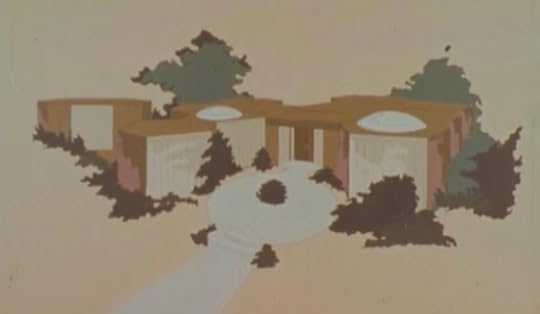
February 1, 2013
Extraordinaires 2 Cover
Here we are: the stunning, atmospheric, brooding, enticing cover for ‘The Subterranean Stratagem’, the second book in ‘The Extraordinaires’ series. Random House Australia does quality work!
I love it.
Publication date: April 2
January 24, 2013
Steampunk is the future!
Some fascinating research here about how Steampunk is going to be the Next Big  Thing. Pundits are predicting that Steampunk will surge into mainstream consciousness in 2013 before going gangbusters into world domination in 2014.
Thing. Pundits are predicting that Steampunk will surge into mainstream consciousness in 2013 before going gangbusters into world domination in 2014.
And do click on the thumbnail of this sensational infographic so you can see the whole thing. It’s gorgeous and tres informative.
Infographic source: ibmphoto24
January 16, 2013
Five Tips for Revising and Editing
Tip 1: use Word’s ‘Find’ feature (or ‘Advanced Find’ in Word 2010) to highlight words you use too often. Plug in the word, click on ‘Reading Highlight’ and then skim through your ms to get a stark visual overview of often the word appears. An abundance of fluoro yellow might mean you need to vary your vocab a little.
Tip 2: try editing from back to front. After working through my ms a number of times, I get the feeling that the first chapters get the most attention. I know my attention shouldn’t flag but I’m sure it does. The chapters toward the end probably don’t get the same scrutiny. Therefore, near the end of the process, I do a backward edit – I start with the last chapter, then when I’ve finished with it I go to the second last chapter and so on. It reframes my revising and it’s remarkable what I pick up.
Tip 3: use Word Lists. I have a number that I use when revising/editing. One is a list of words I tend to overuse (see Tip 2). Others are lists of contextual vocabulary – historical slang, technical jargon, foreign words – that can be added while revising.
Tip 4: if your habit is to revise/edit on a print out, try one pass through on screen. And vice-versa. If your practice is to revise/edit on screen, try a pass through using a print out. Working in a format you’re not comfortable with or accustomed to can put you on your mettle.
Tip 5: read your dialogue out loud. There’s nothing like this to highlight whether your characters are talking naturally or not. If you find yourself reading in one character’s voice, uninterrupted, for five minutes – you might have a mouthpiece instead of a character.
January 7, 2013
Anachronisms and the ‘Okay’ problem
When writing High Fantasy, one of the challenges is to maintain a certain level of diction. By this, I mean the sort of language used in the body text and in the dialogue of the characters. It comes down to vocabulary and sentence structure in the end, and with the usual quasi-medieval setting of most High Fantasy this means a certain old-fashionedness in language.
When this is done in a ham-fisted way, we get the sort of ‘forsoothery’ that quite rightly prompts parody, with characters flinging about ‘thee’ and ‘thou’ with no understanding of how these pronouns actually work, and then jamming in a ‘ye olde’ here and there – again with no understanding of what a howler that construction is.
What the writers of the best High Fantasy strive for is to achieve a consistent level of old-fashioned language, one that gives the illusion of being archaic. There are many ways to do this, but one of the simplest and best is to avoid anachronisms.
Anachronisms, in this sense, are words or expressions that are too modern for the setting of the story. Good vocabulary choice inveigles and seduces a reader into the old-fashioned world of the story. Bad vocabulary choice – anachronistic language – jars a reader out of the story, which is a bad thing indeed.
Many, many years ago I came across a stark example of this in a Choose Your Own Adventure book. Things had been going along well, with a mixed adventure party (elves, dwarves, humans) pottering about meaningfully in a perfect medieval castle, and then they met a party of bloodthirsty goblins. That’s when the chief elf uttered the immortal words: ‘Let’s make hamburger out of them!’
Even though I was a naïve reader, and without quite knowing why, I shuddered at that. I put the book down, completely taken out of the story and unwilling to continue – an outcome every writer wants to avoid.
How to avoid anachronisms? A good historical dictionary is most useful, one that cites the first appearance of a word, but more important is a sensitivity to language. When writing in this mode, a writer simply must understand that language changes, that how we speak today isn’t the way people spoke years ago. Reading texts – novels, plays, poetry – from centuries past can be helpful. ‘Is this the best/most appropriate word?’ should be a standard question every writer asks of his or her own work. Building up a list of words that are perfect, contextually, is a good strategy. When reading, I’m always alert for such words and I have a number of such lists, each one pertaining to a particular time frame.
This brings me to the vexed question of ‘okay’. This might be personal, but no other words screams modernity more than ‘okay’. It sounds so contemporary, so urban, so up to date, that every time a bold knight or cunning sorceress says, ‘Okay’ I groan.
And this is even though I know that ‘okay’ isn’t as modern as I feel it is. It has a reasonably venerable history going back to the early 1800s, even though its precise organs are hotly contested. And I realise that most of the other words a writer uses aren’t historically accurate either, but my contention is that some words are signifiers, that they are language landmarks where a writer stakes her or his claim to authenticity. When ‘okay’ appears in a High Fantasy book, it’s like an atomic-powered killing machine appearing in Pride and Prejudice.
To my mind ‘Okay’ is out of place in High Fantasy, and using it is a mistake.


